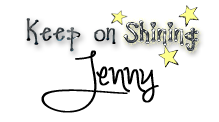Have you ever been in a group of children or adults where everyone wanted to talk at the same time? Did you like the way it felt when you couldn't get in a word edgewise and you really wanted to be heard? I remember a time when I was in a group of adults that were all very caring passionate people who wanted to be heard, but because everyone was talking at the same time no one could really speak. In a situation like this, chaos usually ensues! There have been many times when I have been in staff meetings where someone was leading a discussion and there were many little side conversations going on while the speaker had the floor. I realized recently what a trigger it is for me when I feel like I have no voice. Imagine how that feels for a five-year-old!
The more you understand about human behavior and child development, the better you will understand why people get chatty sometimes! For young children, one reason they have difficulty waiting quietly is because they are still in the process of developing their impulse control. Another reason is that when an idea comes to a young child (under age 8) they see it in pictures. They don't think in words like adults do. So, they see the picture and want to verbalize what they see! That's why they often blurt out! It takes a lot of self-control not to say what comes to your mind, especially if you forget what it was if you don't have the chance verbalize it right away! Creating a School Family where everyone has a voice and feels safe and connected is the best solution for this problem!
When I am coaching teachers in the classroom one of my favorite tools to add is what I call a Talking Stick. The purpose of the Talking Stick is to give everyone a visual reminder of where to focus their attention during the group discussion. When they are holding the stick it is their turn to talk. When someone else is holding the stick then they focus on that person and use their listening ears.
Look how engaged the child is in the picture above!
When introducing the Talking Stick, we begin by discussing the problem that our School Family has been having with listening while other people are talking. We can also be proactive and introduce the Talking Stick at the very beginning of the year to head off any problems before they begin. (wink, wink)
I like to use a star wand as my Talking Stick, but you could use any object that you feel your class will connect with. The reason I use a star wand is because it is a good visual reminder to be a S.T.A.R. (Smile, Take a deep breath, and Relax) while the group discussion is going on. If someone begins to talk out of turn it will help them remember to take a deep breath and wait until later. I know some teachers use a toy microphone, megaphone, or even a stick from outside.. Once you decide what object to use help the class decorate it to represent their School Family. This brings a sense of unity among class members. We used colored ribbon and the children choose a pony bead that they liked and tied it on the ribbon of their choosing.
Now, back to those staff meetings and group discussions among adults! Don't you think it would be helpful for adults to practice what they preach? Conscious Discipline is an adult-first approach. If you expect your students to sit and listen quietly while others are talking you need to do the same. That means that when you go to that next staff meeting or someone walks into your classroom while you are having a group discussion you have a great opportunity to model the skills you are teaching to your children. It will raise your own awareness of how difficult it is to wait your turn, especially when you have something that you believe is really important to say! Heck, maybe we need Talking Sticks in staff meetings too!










No comments:
Post a Comment